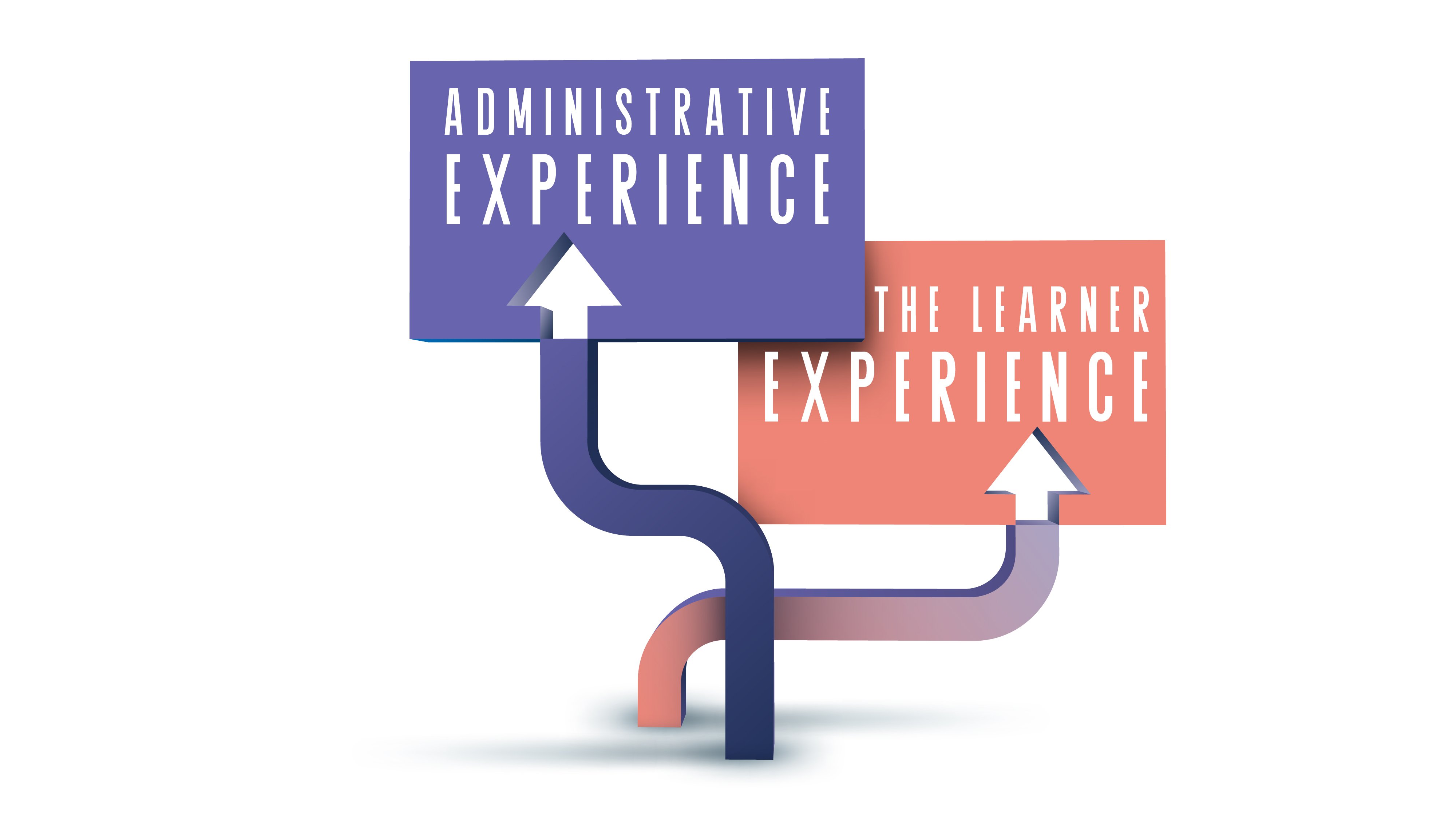As discussed in our previous post about the steps involved in choosing a learning experience platform or learning management system (LMS), the marketplace offers many off-the-shelf LMS options. This makes it seem as if the best option will be apparent once you and your organization have determined your needs. But it’s usually not quite so straightforward. An LMS that seems perfectly fine initially may not help you reach all of your goals, and it’s helpful to take a look at why that could happen.
By researching and comparing 10 leading LMS platforms, our team at Extension Engine has found that most of these platforms prioritize either the features that administrators and business stakeholders want to see (e.g., metrics and e-commerce) or the features that make a great learning experience (things like active learning, good user experience [UX], and accessibility).
Both aspects are important for an organization looking to deliver an online learning program, so understanding what happens when you prioritize either the administrative experience or the learner experience can give you a good sense of the potential pitfalls — whether you go with an off-the-shelf option or build your own. Being aware of these tradeoffs can also help you sort through which positives of each situation you want to preserve for the LMS you choose.
Prioritizing the Administrative Experience:
Making this your focal point definitely has some pros. Here’s a list of the main benefits:
- You’ll get a focus on metrics and data.
- You can track all learner activity and completion.
- You’ll likely have access to learner incentives like badging.
- You’ll have an easier time setting up e-commerce.
These things are all important, of course, to the success of your organization. You need to know your metrics and data in order to see if you’re succeeding in your basic goals for engagement. Knowing how your learners are actually interacting with your content and whether they’re completing it is key to confirming that you’re teaching what you want them to know effectively and efficiently. And of course, you can’t monetize without a robust e-commerce setup.
However, if you focus on these things exclusively, there are some serious cons, including the following:
- You can end up with a very basic and/or inflexible learner experience that forces you to use third-party authoring tools to create engaging content.
- You may only have access to basic assessments for your learners, such as multiple-choice quizzes, which are great for quick knowledge checks but can’t measure meaningful learning.
Prioritizing the Learner Experience
Say you decide to put the learner experience first instead. Your organization wants to ensure that enabling your learners to meet their outcomes is the primary factor in all decisions, so you pick an LMS that is focused on what your learners need.
The common pros of such an LMS include the following:
- You’ll likely get a higher level of flexibility when it comes to structuring learning content and activities.
- Your learners will be able to engage with your program in more ways, probably including interactive features, access from multiple devices, a high level of accessibility, and social features.
- Your learners may have even more options for engagement, depending on the LMS, because when a system prioritizes the learner, many possibilities exist.
Your cons this time are all on the administrative end:
- You won’t have robust administrative features like e-commerce, making more work for your organization.
- You may not have access to analytics or any program management features.
These things may not seem like a problem at first — “Our learner is our priority!” you might say — but you can’t serve your learner well if you don’t know how effectively they’re learning. With a learner-focused LMS, you’ll need to work harder to obtain that information, using options such as surveys or third-party reporting tools like Google Analytics.
Getting to Your Own LMS
Being aware of these pros and cons is a key part of finding your best fit with an LMS. The fact is, there isn’t an LMS that can prioritize everything at once and meet every need flawlessly. But that doesn’t mean that you and your organization can’t find or create one that serves both you and your learners well. You just need to decide what tradeoffs you’re willing to make, and to do that, you need to rank your priorities. Our rubric can help with that.
At Extension Engine, we can help you with these decisions. We can also help optimize whichever platform you choose, in order to give you the best possible experience using it. Whether you decide to go off-the-shelf or custom, we can help you identify and address potential problems using targeted solutions. We can fill whatever gaps exist in your chosen LMS to give both learners and administrators a complete, satisfying experience.
To get an idea of what you can create with a custom LMS, check out the case studies for several of our projects at the following links:
- University of Notre Dame case study (higher education)
- Association of International Certified Professional Accountants case study (nonprofit)
- Fitch Learning case study (learning business)
